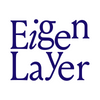Twelve Early Projects Building on EigenLayer
EigenLayer is proud to highlight twelve early projects building on top of EigenLayer’s infrastructure to deliver innovative use cases within the Ethereum ecosystem. These projects include actively validated services (AVSs) as well as users of AVSs, including users of EigenDA, the first AVS that will launch on EigenLayer later this year.
Below, we highlight projects from across the crypto ecosystem including AltLayer, Blockless, Celo, Drosera, Espresso, EigenDA (developed by EigenLabs), Hyperlane, Lagrange, Mantle, Omni, Polyhedra, and WitnessChain.
We feel fortunate to have the opportunity to work with such incredibly talented teams on such novel use cases. In addition to the publicly announced collaborations above, we continue to work privately with a large number of potential AVSs and EigenDA users. If you’re interested in exploring either of these paths, please contact us via the forms below:
Benefits for Actively Validated Services
EigenLayer seeks to increase the rate and scope of open innovation by serving as a platform for borrowing programmable trust from the Ethereum trust network, enabling developers to launch a wide array of blockchain systems such as interoperability layers, modular execution layers, data availability services, and more.
EigenLayer provides these developers with the flexibility to customize the trust they want to borrow from Ethereum trust network in a programmable manner, based on decentralization and cryptoeconomics, tailored to their specific use cases.
By using EigenLayer, developers forgo the burden of building their own trust network, reducing both upfront and ongoing costs required to run a successful network. Developers can benefit from Ethereum’s large and decentralized base of validators, as well as Ethereum’s large staked capital base.
Benefits include: the ability to build blockchain systems without needing to set up and maintain your own validator network; avoiding the need for high token inflation rates to incentivize the provision of security; avoiding the need to launch native tokens at all, unless you choose to do so; and the ability to focus on the specific innovation that you as a developer want to enable, without needing to roll the entire blockchain technology stack from the ground up in order to innovate on just one part of it.
This capital-efficient model removes barriers to entry for new blockchain projects and deepens security for established protocols, paving the way for more agile, decentralized, and permissionless innovation on Ethereum.
Projects Building on EigenLayer
The following projects are pioneers in using EigenLayer to secure their infrastructure, by harnessing the cryptoeconomic security and decentralization of Ethereum that the EigenLayer protocol aggregates, consolidates, and extends to AVSs.
AltLayer
AltLayer is building Rollups-as-a-Service tools to scale execution at a fraction of the cost. AltLayer offers flash rollup by employing EigenLayer validators to quickly verify state transitions permissionlessly.
Blockless
Blockless is an infrastructure platform to launch and integrate full-stack decentralized applications, enabling them to operate beyond smart contract limitations. With a globally distributed, trustless node infrastructure—secured and powered by EigenLayer’s restakers and operators—applications can achieve high-performance trustless computing, automatic horizontal scaling, and advanced load distribution.
Deep dive into the collaboration on Blockless’ post in the EigenLayer forum.
Celo
Celo is migrating from an EVM-compatible Layer-1 blockchain to an Ethereum Layer-2 to enable trustless liquidity sharing, decentralized sequencing and foster greater alignment with Ethereum.
Celo will utilize the data availability layer powered by EigenLayer and EigenDA that inherits architecture from Danksharding’s for increased throughput, lower costs, and reduced latency.
Check the official migration proposal where Celo’s team expands on EigenLayer’s role in this big event for their ecosystem.
Drosera
Drosera is a zero-knowledge automation protocol that provides emergency response infrastructure to Ethereum. EigenLayer is leveraged to bootstrap Drosera with a native trust network that becomes more decentralized over time.
Drosera aims to leverage the decentralized nature of Ethereum consensus to create a robust and responsive first responder collective. Protocols define emergency response logic and advanced validation checks for Operators to carry out. Eigenlayer slashing and reward mechanisms ensure honesty and accountability. This approach to security expands monitoring and bug bounty programs to a dynamic model.
Espresso
Espresso is creating a shared sequencer solution that enables rollup decentralization, improved interoperability, and a robust, highly scalable data availability layer. It is leveraging restaking through EigenLayer to optimize node usage and capital efficiency while ensuring credible neutrality, security, and fast pre-confirmation in transaction validation.
Restaking enables alignment between Layer-1 validators and the Layer-2 ecosystems they support. In a centralized sequencer, nearly all of the rollup value (e.g., fees, MEV) is likely to be captured by the sequencer. If little or none of the value generated by a rollup is captured by the Layer-1 validators, it can destabilize the security of the rollup, since the Layer-1 might be tempted to act maliciously. By decentralizing the sequencer and involving Layer-1 validators in its operations, these security concerns are substantially mitigated.
Further details about this partnership can be found in Espresso’s announcement.
EigenDA
EigenDA is a data availability service that offers high throughput and derives economic security via Ethereum operators and restakers. Built on the principles of danksharding, EigenDA is designed to expand the scope of programmability for rollups while pushing the throughput ceiling. Horizontal scaling will enable EigenDA to eventually scale as high as 1 TB/s with minimal cost and technical overhead on each operator. Flexible tokenomics, reserved bandwidth, modifiable signature schemes and elliptic curves, and other features enable EigenDA to support a variety of projects and use cases.
Learn more about EigenDA in this talk from Sreeram Kannan, earlier this year.
Hyperlane
Hyperlane is developing a permissionless interoperability layer that enables interchain composability, including native rollup bridges, inter-rollup communication, and multichain application architecture. It is bringing modular security derived through restaking via EigenLayer to enable permissionless, chain-agnostic application deployment to any environment.
You can see the scope of our partnership with Hyperlane in this forum post.
Lagrange
Lagrange is building infrastructure for zk-based cross-chain state and storage proofs. It is bringing super-linear security derived through restaking via EigenLayer, which provides a powerful primitive to dynamically scale the underlying security of state proof generation, overcoming the inherent security limitations that bridge face at scale.
Lagrange State Committees, composed of EigenLayer restaked validators, attest to the finality of a proposed block state transition submitted by optimistic rollups’ sequencers to Ethereum. These attested blocks are then used to generate zero-knowledge state proofs using Lagrange’s ZK MapReduce proof system. Messaging or bridging protocols can use these proofs to create a shared and permissionless zone of security for cross-chain state.
For more details, see the full announcement on Langrage’s Medium article and their forum proposal.
Mantle
Mantle is building an Ethereum Layer-2 that enables fast and cost-effective transactions through innovative rollup architecture and modular data availability. Mantle is currently using MantleDA, a modified variant of EigenDA, and will migrate to EigenDA when it’s launched. This enables the Mantle ecosystem to have the high throughput and low gas cost necessary for next-generation applications in blockchain gaming, decentralized social networks, and more.
Read more about the collaboration in this blog post from the Mantle team.
Omni
Omni is creating interoperability infrastructure to act as a unification layer for all rollups that enables the transmission of data from one to another. It is building on EigenLayer to derive security for future use cases including cross-rollup stablecoins and primitives that can aggregate liquidity and facilitate rapid and cheap communication between rollups.
You can see how EigenLayer fits in Omni’s tech stack in their launch blog post.
Polyhedra
Polyhedra is developing novel zk proof-based infrastructure to enable trustless and efficient cross-chain interoperability using parallel and distributed computation. It is leveraging restaking through EigenLayer to enhance the security and efficiency of Layer-1 and Layer-2 chains using zkBridge, reducing on-chain verification costs on EVM-compatible networks.
You can read more in the official blog post from the Polyhedra team.
WitnessChain
WitnessChain is building transparency middleware for blockchains. By leveraging Eigenlayer’s decentralized network, WitnessChain is able to create a decentralized watcher network for provable monitoring of AVSs. This network will provide the first line of defense for optimistic rollups.
Onboard your Project
Again, these publicly announced projects are just the earliest seeds in the budding EigenLayer ecosystem. We’re grateful to these teams for their ingenuity and close collaboration - their contributions are invaluable. We’re committed to permissionless innovation for all, and we’d love to work with you too!
Join the collective of AVSs building on EigenLayer, and projects building on EigenDA, and launch your project with increased functionality, security, and efficiency, by leveraging the base layer decentralized trust of the Ethereum network via EigenLayer. To submit your interest, follow one of the paths below:
Keep up with the latest on EigenLayer!
- Visit the website: eigenlayer.xyz
- Check out the restaking app: app.eigenlayer.xyz
- Read through the documentation: docs.eigenlayer.xyz
- Meet the community in Discord: discord.gg/eigenlayer
- Contribute research ideas to the forum: forum.eigenlayer.xyz
- Follow @eigenlayer on Twitter: twitter.com/eigenlayer

